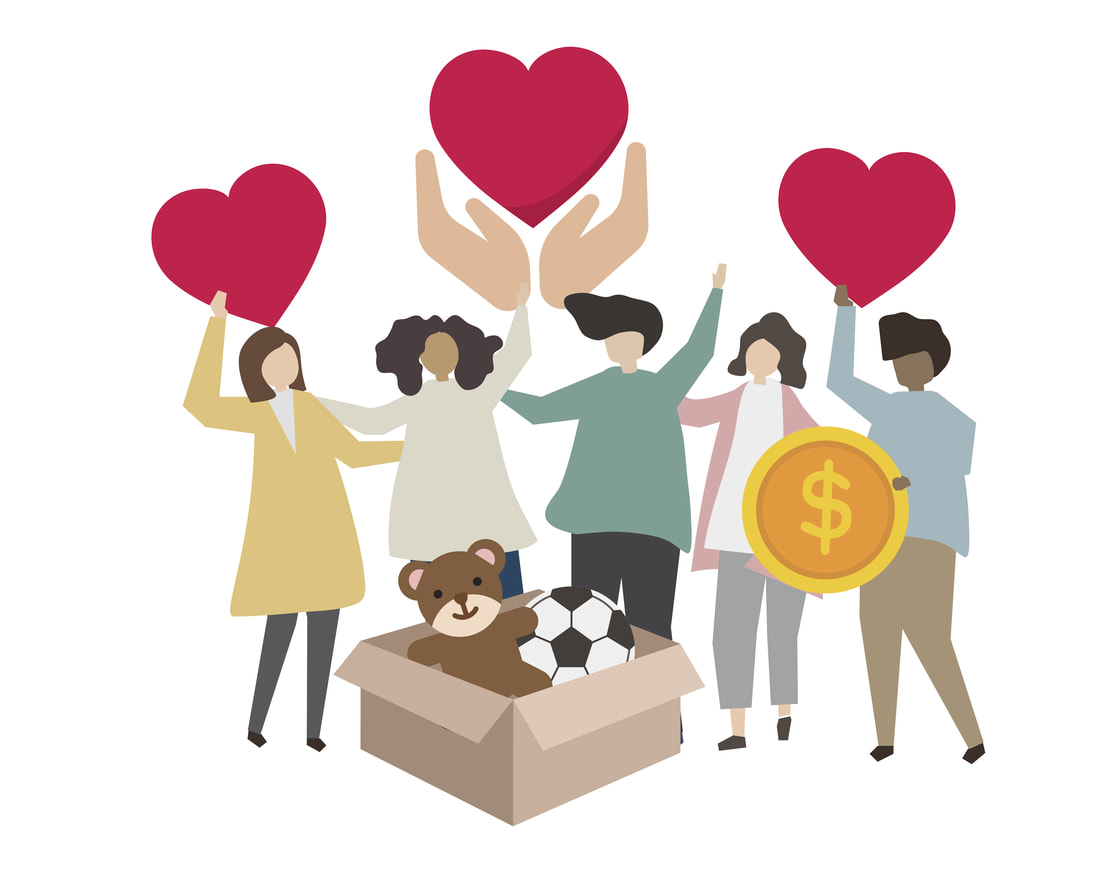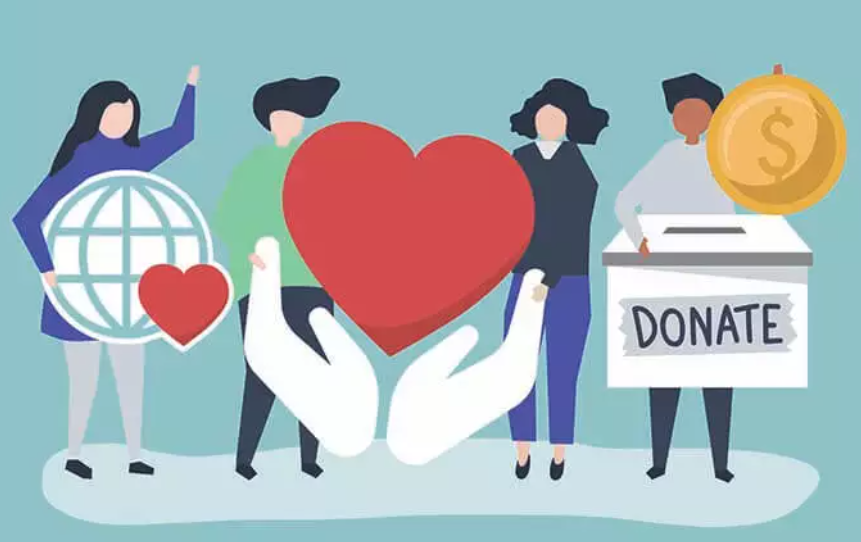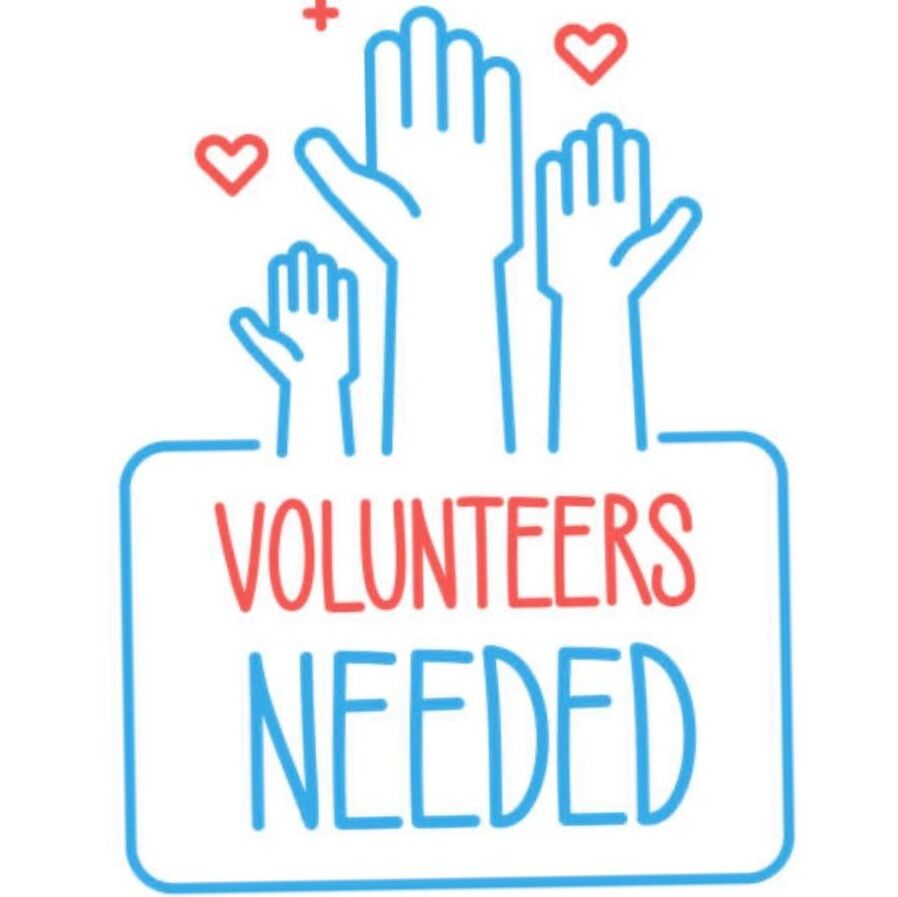|
By Jordan Hannan Brooke does absolutely everything but sleep. She’s a two-sport athlete, enrolled in one of the most rigorous course loads possible, works two jobs, and is the most incredible friend to everyone around her. Not only that, but she was also the first of my friends to inquire about how she could volunteer through Triangle Cares when I first joined the team. Even when her schedule doesn’t allow for rest, Brooke continues to prioritize having a positive impact on others. She’s able to accomplish everything she needs to, as well as everything that the average person makes excuses to get out of. How can this be possible for the rest of us?
Despite its simplicity, the common idea of donating your time, talent, and treasure can be quite difficult to put into practice, particularly due to the rarity of free time. Everybody deems their lives to be busy, indicated by the growing market for productivity apps and time-saving home-automation accessories. If we have convinced ourselves that we’re too preoccupied to even queue up a playlist without Alexa, it must seem even more inconceivable to dedicate hours at a time to cleaning up trash at your local park or serving at the nearest soup kitchen. However, incorporating service into your weekly schedule doesn’t have to be a great disruption or huge commitment:
If you’re in need of some new nonprofits to donate your time to, check out our website here!
0 Comments
By Jordan Hannan It seems that there’d be absolutely no way that a middle schooler could raise four thousand dollars from a charity bake sale in an elementary school cafeteria, but I did. For four consecutive years.
My limited skill set would never allow for even the formation of this service project. However, when combined with that of my peers, family, and school community, we were able to donate a total of $16,000 to the Marfan Foundation. My grandmother’s and teachers’ baking, parents’ organization, and peers’ support were equally integral in ensuring the success of the project, though I doubt our eager patrons ever realized just how many uniquely talented people had helped in its creation. While it’s obvious that any business would need website developers, accountants, leaders, handymen, or marketers, we tend to disregard that a nonprofit might need to fill those roles also. There is far more to any organization than the food drives and charity events that one-time volunteers attend. Without the donation of your skills, nonprofits would never be able run successfully, eliminating all potential for service opportunities or positive change. The concept of volunteering tends to get put into a box--as if the only way you can contribute to your community is by donating a bag full of canned green beans once a year. Instead, nonprofits are the culmination of innumerable volunteers’ talents. If you are looking to provide long-term support for your favorite charity, here are some ways you can get started: Take a look at your career. Your résumé is filled with skills that can be easily applied to serve others, whether you are a teen with a part-time summer job or a parent with a twenty-year history with your corporation. My mom provides a great example: She’s an accountant, making her extremely organized and comfortable with numbers, so she volunteers as the head of the finance committee at our parish. Similarly, if you tutor younger kids, you would be a wonderful addition to the Gigi's Playhouse team. If you wait tables, A Place at the Table would love to have you. Reconfigure your hobbies. While there are plenty of service opportunities that align exactly with your interests (check out our blog regarding this here), don’t limit yourself to just those. A friend of my parents, Jon, exemplified this perfectly by channeling his knack for construction into creating a book cart for our local NICU (Neonatal Intensive Care Unit). If you love to draw, find a nonprofit in need of new digital advertisements. Try leading a charity 5k if you’re a talented runner or great host. Focus on why you excel in your extracurriculars rather than activities themselves. The balance between school, work, service, athletics, and social activities may seem overwhelming or nearly impossible; allow Triangle Cares to help you find time to serve in next week's blog. By Jordan Hannan While it is entirely preferable to find your passion without the intervention of a life-changing event, I was not so lucky. June 15th, 2020 left me bedridden with the worst pain I have ever endured, finding sleep nearly impossible during the nights but unavoidable during the day, horizontal and bored out of my mind for 23 hours every day for weeks on end. What left a 14-year-old girl with a dozen “get well soon” blankets and stacks of sweets that only her family could enjoy: a complete spinal fusion, gifting me with two metal rods, four wires, and twenty-two screws in place of one fully-functioning spine.
My experience was undoubtedly horrendous, but there were several positives: my impressively short four-day stay at Duke University Hospital, the life-altering discovery of Sour Patch Kid Watermelons, and eating what I thought were the most delicious meals this planet could offer. (According to my mother, the grayish hospital oatmeal and rice was not the delicacy I thought it to be.) Among these highlights, however, was finding what makes me happiest: spending time with others. I’ve always been a social person, but I’d never realized just how much I needed to be surrounded by others until that was almost entirely taken away from me. Despite the difficulty I had even holding up my phone, FaceTiming my sister from my hospital bed was the first time I remember smiling after my 9-hour surgery. Later, the Fourth of July finally allowed me to see my four grandparents for the first time, and I’d never been happier, even though my overexcitement left me in an immense amount of pain. I knew that nothing in this world could provide the same sheer contentment of being with other people. However, finding something you enjoy is not the same as finding your passion. I clearly love talking to others, but that alone is entirely too shallow to consider it the most valuable part of my life. The same goes for any hobby you might have--sports, music, cooking, or painting. You can, however, find depth by using your hobby to give back to others. While you may have several hobbies that you enjoy, your sole passion, the element of your life that you feel like you could never live without, must not only better your life, but also the lives of those around you. For me, this takes place in many ways, but all have taught me to better appreciate my love for meeting new people and spending time with those I already know. At Cardinal Gibbons High School, I lead tours for prospective students and families. Similarly, I volunteer as a counselor for underclassmen retreats and as a greeter at my church. My parents have also turned their passions into service--my father combined his love for golf with my mother’s affection for our family, creating the Kaitlyn and Jordan Classic, a charity golf tournament made to give back to Duke Children’s, the hospital that saved the lives of both my sister and me. This deepened connection between the cause and the volunteer greatly increases the impact of their service, allowing the discovery of your passion to incite positive change. The Triangle Cares website contains the contact information for all sorts of nonprofits that can be aligned with your passion, strengthening its influence on your life and the lives of others. However, if you are still unsure how you can share your talent to serve others, allow us to help you next week. By Jordan Hannan As if she always had a dozen invisible balloons tied to her wrist, my close friend Kate is smiling every waking moment. Like her, there are some people that just seem so ecstatic to be alive, as though they personally selected that day’s shade of blue to color the sky. A seemingly simple characteristic, continuous genuine happiness, is becoming increasingly rare, and therefore even more admirable.
Fleeting happiness? Incredibly easy to find: a vacation, a night out, an A on a test, or winning a championship. Any of these events, while exciting in the moment, have no longevity when it comes to providing your life with value. The satisfaction of an A on a test fades with the impending anxiety of the next exam. The same goes for a family vacation: leading up to and during your trip, you are a flurry of anticipation and gratitude. However, as soon as the plane lands back in RDU, the longing for the next holiday begins. Finding “happiness” in momentary experiences or materialistic achievements is not adequate when seeking to live a complete life. There are three ways to effectively eradicate this pattern of thinking revolving around temporary reward, while simultaneously replacing it with the unending positivity of a consistently cheerful person:
Spreading positivity by finding your passion is easier said than done, so allow us to help you get started with next week’s blog. By Jordan Hannan One week ago, I spent two full days raving to my three family members about my spectacular experience picking up a singular quesadilla from Moe’s Southwest Grill. If you’re wondering what could have possibly made such a mundane experience so notable, I am, too: The employee who prepared the meal did so enthusiastically before passing it along to her coworker. When handing me my to-go bag, the cashier screamed, whipping it back toward himself explaining, “The lid was about to come off. I didn’t want you to lose your chips.” Grateful for his extra care, I held the door for a fellow patron, who wished me a great day on her way out. Clearly, this is not the outstanding narrative that my sister expected after volunteering to hear my third rendition of this story. How could finding three kind strangers in one spot be this newsworthy?
By 2016, an estimated 900 million people were stuck feeling unfulfilled by their lives, and that number has only increased since. Not only that, the 2022 World Happiness Report concludes that, “Positive emotions have generally been twice as prevalent as negative ones. That gap has been narrowing over the past ten years, with enjoyment and laughter on a negative trend in most regions, and worry and sadness on rising trends.” Despite the objections that seem to follow these studies, our daily interactions with others prove their veracity. It’s never difficult to tell whether someone is a generally happy or unhappy person; a traffic light, coworker, or mixed-up order could determine so. Stopped at a red light, some drivers will grumble for the entirety of the wait before sounding their horn the moment it switches to green. Others will take the moment to appreciatively sip their morning coffee or lovingly pet their dog in the passenger seat. When they both arrive at work, the first will assure that everyone they interact with is up-to-date on their latest inconvenience, while the latter will kindly remember to ask their coworker how their weekend was or include them in their lunch plans that afternoon. When their break starts, both end up at the local sandwich shop. When their orders are swapped, the first will blame the cashier and complain for the remainder of the day, while the second will thank the store for their apologetic replacement. The course of these two workdays were entirely up to the mindset of the individual, one being entirely reactionary while the other focused on gratitude. Unfortunately, the vast majority of us witness the unhappy scenarios far more frequently, and they will undoubtedly continue unless we, individually and collectively, invoke change in order to lead more fulfilled lives. Happy people do not universally identify as the same race, gender, or economic class. However, they consistently share a feeling of purpose, whether that be through a hobby, their work, their interactions with others, or volunteering. The quickest way to ensure that you lead an unhappy lifestyle is to isolate yourself from others, to neglect caring for your health, and to see life with a fixed, negative perspective. Not only that, you also--so generously--cultivate a community of unhappy people through your infectious actions. However, at Triangle Cares, we believe that one happy person brings about another, and we would love to teach you how to be a changemaker in positivity in next week’s blog. School is finally out and summer is officially here. During the long, lazy days of summer, it’s tempting to simply relax and unwind after a busy year in school. However, as a high school or college student home for the summer in the Triangle area, you probably have a bit more time on your hands since you're no longer taking class. A great way to fill this free time is by volunteering at a local nonprofit. As well as helping the organization, this can benefit you by adding valuable experience to your resume. Here are a handful of organizations that are looking for volunteers this summer:
Note in the Pocket: Note in the Pocket is an organization located in downtown Raleigh that provides quality clothing to homeless and impoverished children and families. Note in the Pocket works with Wake County Public School System (WCPSS) social workers and case managers to find individuals in need. So how can you help? Note in the Pocket has a wide variety of volunteer opportunities and ways that you can contribute. As stated on their website, Note in the Pocket welcomes volunteers to their site daily in downtown Raleigh to assist with organizing, sorting, sizing, and packaging clothing for the thousands of clothing requests they receive each year. If you don’t have the time to volunteer in person, you can still contribute to Note in the Pocket by donating clothes that you might be looking to get rid of. A Place at the Table - A Place at the Table is a restaurant in downtown Raleigh that aims to provide community and good food for all regardless of means. A Place at the Table is Raleigh’s first pay-what-you-can cafe. You can either pay $3 for a meal or you can volunteer an hour of your time. Maggie Kane, founder of A Place at the Table, wanted to create an alternative to soup kitchens by creating a cafe where people of all means can come and enjoy a quality meal together. You can volunteer by working a shift at the cafe and assist with food preparation, serving, and ringing up customers. Miracle League - Miracle League is an organization that aims to provide a positive experience for children and young adults with special needs through the game of baseball. You can volunteer at Miracle League as a buddy or as a coach. Miracle League’s Buddy system pairs each player with a volunteer helper. As a buddy, you’ll be side by side with the players and assist them through the game - batting, playing the field, and running the bases. Buddy training is provided on-site beforehand. You can also volunteer as a coach of a team. This position requires more of a commitment than being a buddy, but it allows you to guide a team through the season and build a strong connection with the players. You can also volunteer by helping with game day operations. Keeping Durham Beautiful - Keeping Durham Beautiful is an organization that aims to improve and beautify neighborhoods throughout Durham. As an affiliate of Keeping America Beautiful, the mission of Keeping Durham Beautiful is to to engage and inspire individuals to take greater responsibility for their community environment. If you enjoy the outdoors and value the beauty of God’s earth, this might be the perfect summer volunteer opportunity for you. Keeping Durham Beautiful has a variety of ways to volunteer including litter clean ups, educational workshops, and working in gardens to improve community greening. There’s no better time to volunteer with a local organization than during the summer! You can use the Triangle Cares website as a platform to explore a wide variety of nonprofit organizations throughout the triangle area and find a volunteer opportunity that you are passionate about. Not only will it be a great addition to your resume, especially if you aren't working during the summer, but it also will make you feel good! You have this incredible idea to start a school for low-income students in your community. You see that there is a strong need for this type of work as the education system seems to be failing those who are underprivileged in your town. You finally decide to quit your job and go all-in on starting this nonprofit organization. But, where do you even begin?
First and foremost, if you want to start your own nonprofit organization, you need to know from the outset that it is going to take a tremendous amount of time, energy, commitment, and dedication to get your idea off of the ground and into a functioning nonprofit organization. The legal paperwork is a lengthy process and finding the funding can take quite a bit of time and effort as well. If you have an idea, we recommend that you start by doing a bit of digging on whether any type of organization - similar to the one you have in mind - already exists. If one does, then you should contact them and find out how you can help out or collaborate with that specific organization. However, if you can’t seem to find any organization like the one you're envisioning, and you feel compelled to start your own, here is a simplified step by step guide on how to start your own nonprofit organization! You might ask: “What exactly, in legal terms, defines a nonprofit organization?” This is a common and frequent question among ambitious individuals who want to start their own organizations. A nonprofit is defined by the IRS as an organization that is operated exclusively for religious, charitable, scientific, testing for public safety, literary, educational, or other specified purposes. This organization must operate and provide its services without the primary goal of making money. While there are many different classifications for charitable organizations, most individuals who find themselves starting their own nonprofit organizations will likely file to become a 501(c)(3). This specific classification enables your organization to be tax exempt under the Internal Revenue Code. However, you should worry about the legal paperwork after you’ve laid the foundation for your nonprofit. Here’s where you should start:
Once you have the foundation set in place, then you will need to apply for a 501(c)(3). The process is unfortunately not as simple as filling out the paperwork, submitting it, and getting the stamp of approval. In fact, it can take 3 months to over a year to get a response from the IRS. But once you have the official 501(c)(3) stamp of approval, your organization is no longer an idea, and it is now an official nonprofit organization. While the process of becoming a nonprofit organization is a time consuming and oftentimes complicated process, this simple guide can get you started and headed in the right direction. Glenaan O’Neil, founder of Lone Star Victims Advocacy Project, has a great piece of advice for individuals starting their own a nonprofit organization: “Understand that most times when you ask someone a question or ask them to do something, you're probably going to get a no, but be ready to follow that up with ‘Well who else do you think I should ask?’”. The process of becoming a functioning nonprofit is a marathon, it's not a sprint. It is going to take a lot of work from a lot of dedicated people. Be willing to ask for help, and if that individual can't help you, ask them if they can point you in the direction of someone who can. Here at Triangle Cares, we understand the value of good volunteers. As an organization, our mission is to connect nonprofit organizations with volunteers in the community. While we have a small team that works behind the scenes on our platform, our volunteer base is arguably the most important part of our operation - without them and the work they do in the community, Triangle Cares would be entirely ineffective.
Volunteers are the backbone of most nonprofit organizations; they are the ones who drive the mission of the nonprofit to benefit the greater community. Having a multitude of volunteers is necessary to scale your organization and mission regionally, globally, or even internationally, but having the right volunteers is how your nonprofit will propel to sustained success. So what makes a good volunteer? The familiar saying “quality is better than quantity” is true when it comes to volunteers. It is better to have a handful of people who are dedicated and believe in the mission of the nonprofit than a larger sum of people who aren’t motivated and are participating for some other benefit - whether that be a requirement for school or an additive to their resume. Furthermore, the standard volunteer can be a nuisance to your nonprofit; they likely bring a mediocre work ethic and show up without generating any results. Here are a few qualities you should look for when recruiting the right volunteers to your nonprofit organization: PASSION - As the leader of your nonprofit, you are passionate about your mission. You should find volunteers that have that same fire within them. They should believe in your mission and see how it benefits the community. When you work with passionate volunteers who bring energy and charisma to serving your mission, you’ve found the right people. COMMITMENT - According to a study from Americorps, the average volunteer retention rate is between 45% and 70% depending on the location that your nonprofit serves. Find committed volunteers that want to support your organization long term. The right volunteers are the ones who stick to their commitments and follow through on their word. RELIABLE - Make sure your volunteers have the time and tools to fulfill the commitment to your cause. For example, if you are recruiting students from a local high school, make sure they have means of transportation. Similarly, make sure that your recruited volunteers have the time necessary for the commitment of the position. PROFESSIONAL - Your volunteers should bring the same level of professionalism that they would bring to any other job. As an organization, you should create a culture where your volunteers enjoy the work they are doing and are able to build friendships with other volunteers while also maintaining an expectation of professionalism. LEADER - Individuals who possess strong leadership skills make great volunteers. They are able to perform high level duties and can help to teach or train others to perform different functions. They also have the ability to inspire team members and spread the mission of your volunteer program. TEAM ORIENTED - Recruit individuals who are team players. A nonprofit organization is essentially a team working together to complete a common goal, whether that is effectively feeding the homeless in a soup kitchen or tutoring kids in low income schools throughout the community. Your volunteers need to be able to work well with their peers so they can collaborate to accomplish the goals of the organization. Although volunteerism is an unpaid commitment, it is still crucial to find the right people for the role; hiring anyone and everyone can create issues, but spending time recruiting individuals who are passionate, committed, reliable, professional, good leaders, and team oriented will scale your nonprofit organization to incredible new heights. Most high school students and those already in the workforce understand the importance
of volunteer experience on their resumes when interviewing for a job. In fact, a 2016 Deloitte Impact Survey found that 82% of over 2500+ hiring managers prefer candidates who have volunteering experience. After spending a week interviewing high school students for a summer internship position, I noticed one striking commonality among nearly all of their resumes: each candidate listed substantial volunteer experience, but it was hidden among seemingly less important extracurricular activities. When I started to dig deeper with each candidate during the interview, many had interesting experiences in their volunteer work that correlate well to the business world, but these experiences were not well conveyed simply through the formatting on their resumes. So how do those new to the work force effectively write about volunteering on their resume? Oftentimes, people who are new to the work force think that volunteer experience should be separate from work experience on their resumes. They decide to list it generally within their extra-curricular activities, and it becomes perceived by the interviewer as something you might have participated in a couple of times along with your other clubs and hobbies. However, you should use your volunteer experience to highlight the skills that you have. Your volunteer experience can go in your experience section, or if your work experience section is lengthy, then you can list it in its own dedicated volunteer-work section. If you are going to list your volunteer experience in your experience section, try your best to not list every single volunteer experience you have in that section. Rather, chose to list those opportunities that are relevant to the job you’re applying for. If your volunteer experiences aren’t relevant to the job you’re applying for, you should list them in a separate section labeled “volunteer experience”. Once you have decided which section your volunteer work will go, you can use the general job description formatting that you would use in a work experience section. Here is an example:
While having volunteer experience is necessary for a resume, what is even more critical is displaying the work that you did as a volunteer in a way that shows the type of worker you are. This can be extremely beneficial for high school students as it is likely that they might have more volunteer experience than work experience. When you format your volunteer experiences the same way that you would your work experiences, it shows that you take every position seriously. This simple tip can separate you from the rest of your peers interviewing for the same position.  Most nonprofit organizations have come to understand the value of social media. These platforms enable you to share an inside look at what your nonprofit is doing and the mission you are serving. Social media is also a tool that can be utilized to increase your donor base and to connect with more volunteers. Many nonprofit organizations are increasing their engagement on platforms like Instagram, Facebook, Twitter, and even TikTok, but they are missing out on arguably one of the most important ones: LinkedIn. LinkedIn is the largest professional network in the world; there are over 690 million active members across the entire globe. The purpose of LinkedIn as a professional networking site is to help people make business connections, share their experiences and resumes, and learn from thought leaders across various industries in the business world. LinkedIn is similar to other popular social media platforms in the sense that it has a continuous feed of content, but LinkedIn’s content centers around business rather than personal matters. What also differentiates LinkedIn from other social media platforms is that less than 1% of users are posting content to their LinkedIn pages on a regular basis. This means that LinkedIn is not oversaturated with content like many platforms are. While most nonprofits maintain a social media strategy on Instagram and Facebook, their strategy undervalues the benefits of utilizing a professional networking platform that can help make connections with prospective partners while also communicating their mission to the greater business world. LinkedIn is a valuable tool for nonprofit organizations because your content is more likely to be seen, but it is also more likely to be seen by the right people. According to research on the platform’s users, LinkedIn members are 56% more likely than the average internet user to donate to charities. This means that being active on LinkedIn allows you to connect with people who likely have disposable income and are more inclined to contribute their time or money than the average user on Facebook, Twitter, or Instagram. Because LinkedIn is underutilized by many nonprofits, now is the time to start prioritizing the platform in your social media strategy to give yourself an edge from the rest of the competition. Here are some tips for how to work LinkedIn in the best way to get visibility for your nonprofit.
|
AuthorsJordan Hannan and Jordan Lappin Archives
January 2023
Categories |
Proudly powered by Weebly










 RSS Feed
RSS Feed